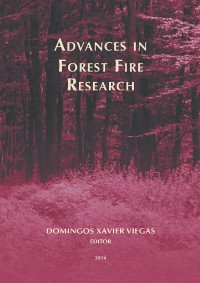Please use this identifier to cite or link to this item:
https://hdl.handle.net/10316.2/34333| DC Field | Value | Language |
|---|---|---|
| dc.contributor.author | Kozaric, Tomislav | |
| dc.contributor.author | Mokoric, Marija | |
| dc.date.accessioned | 2014-10-24T13:32:58Z | |
| dc.date.accessioned | 2020-09-09T21:31:32Z | - |
| dc.date.available | 2014-10-24T13:32:58Z | |
| dc.date.available | 2020-09-09T21:31:32Z | - |
| dc.date.issued | 2014 | - |
| dc.identifier.isbn | 978-989-26-0884-6 | |
| dc.identifier.uri | https://hdl.handle.net/10316.2/34333 | - |
| dc.description.abstract | It is known that the weather conditions can greatly affect the frequency of forest fires and their behaviour and thus the size of the burned area. Besides the wind, the instability of the atmosphere also affects the fire behaviour and that kind of fires are called "plume dominated". In the dry and unstable atmospheric environment fires are intensified and may behave abnormally. As a quantitative measure of the instability in the dry atmosphere and potential for large fire growth Haines Index is used. Higher value of Haines Index (or the class) means higher potential for fire growth. In this work performance of Haines Index was tested for the Adriatic area, part of Croatia with Mediterranean climate where forest fires are the most common and severe. The distribution of the low-elevation Haines Index calculated from upper air soundings was analyzed as well as relationship between Haines Index and forest fire number and burned area. Analysis was done particularly for Zadar region in summer fire seasons of 2011, 2012 and 2013. In all seasons the smallest percentage of high class of Haines Index was noticed, proportion which was desirable and expected. Surprise was a large proportion of moderate class, which stands out in comparison to the other classes. This result disagreed to the Haines Index statistics found in the literature. However, results showed an obvious connection between Haines Index and forest fires in Adriatic region, particularly Zadar area. In the majority of days of fire seasons the increase of class of Haines Index was related to the increase of number of fires and larger burned area. On average the largest number of fires and largest burned area were associated with the high class. The impact of high class of Haines Index to fire behaviour was pointed out the most when the three-day moving sums/averages were applied. Conclusion is that Haines Index can be used also in the Adriatic region of Croatia as an additional tool for issuing warnings on | eng |
| dc.language.iso | eng | - |
| dc.publisher | Imprensa da Universidade de Coimbra | por |
| dc.relation.ispartof | http://hdl.handle.net/10316.2/34013 | por |
| dc.rights | open access | - |
| dc.subject | Adriatic | eng |
| dc.subject | Atmospheric instability | eng |
| dc.subject | Forest fire | eng |
| dc.subject | Haines Index | eng |
| dc.title | Haines Index and the forest fires in the Adriatic region of Croatia | por |
| dc.type | bookPart | por |
| uc.publication.firstPage | 1175 | - |
| uc.publication.lastPage | 1182 | - |
| uc.publication.location | Coimbra | por |
| dc.identifier.doi | 10.14195/978-989-26-0884-6_128 | - |
| uc.publication.section | Chapter 4 - Fire Risk Assessment and Climate Change | por |
| uc.publication.digCollection | PB | por |
| uc.publication.orderno | 128 | - |
| uc.publication.area | Ciências da Engenharia e Tecnologias | por |
| uc.publication.bookTitle | Advances in forest fire research | - |
| uc.publication.manifest | https://dl.uc.pt/json/iiif/10316.2/34333/211511/manifest?manifest=/json/iiif/10316.2/34333/211511/manifest | - |
| uc.publication.thumbnail | https://dl.uc.pt/retrieve/11174312 | - |
| uc.publication.parentItemId | 53868 | - |
| uc.itemId | 70317 | - |
| item.grantfulltext | open | - |
| item.fulltext | With Fulltext | - |
| Appears in Collections: | Advances in forest fire research | |
Files in This Item:
| File | Description | Size | Format | |
|---|---|---|---|---|
| 978-989-26-0884-6_128.pdf | 1.53 MB | Adobe PDF |  |
Items in DSpace are protected by copyright, with all rights reserved, unless otherwise indicated.
